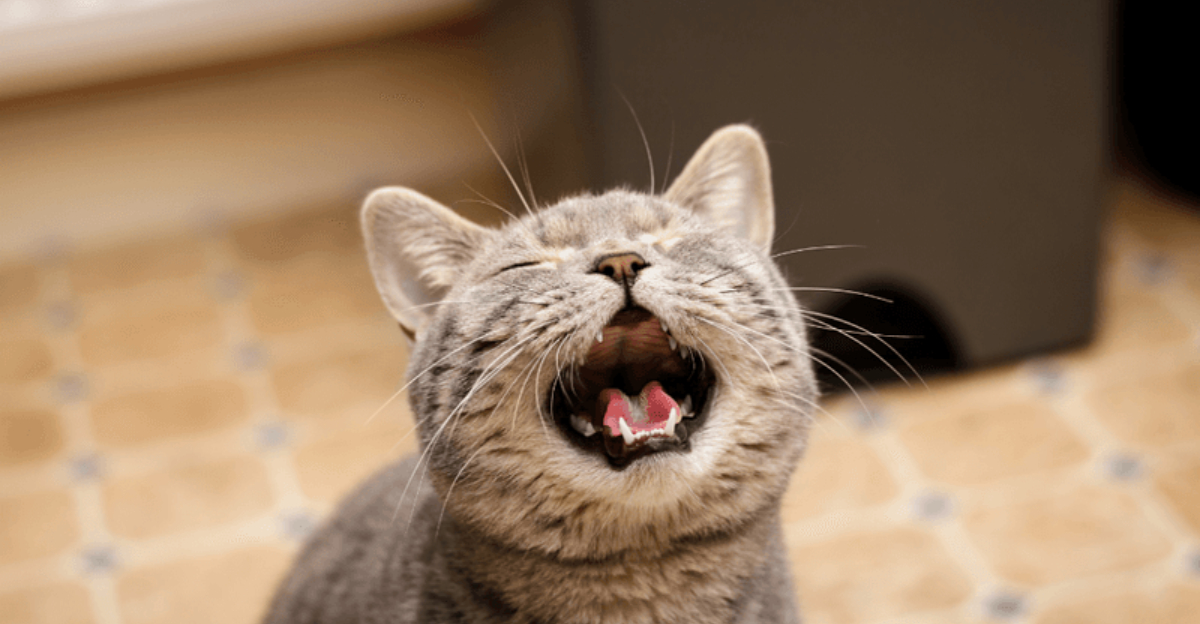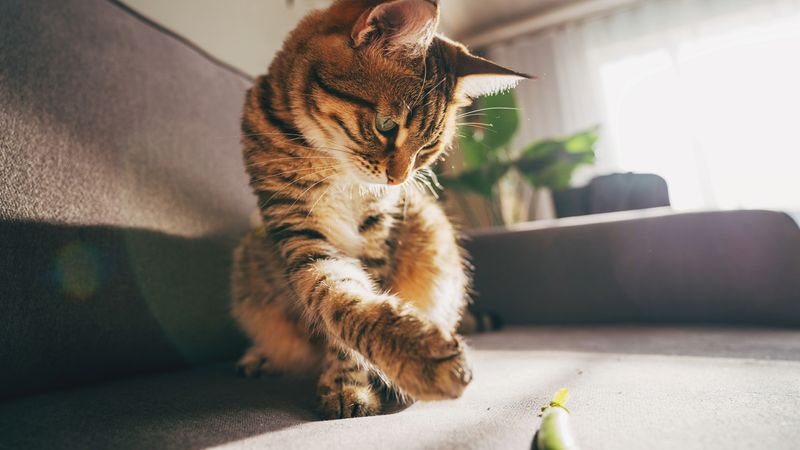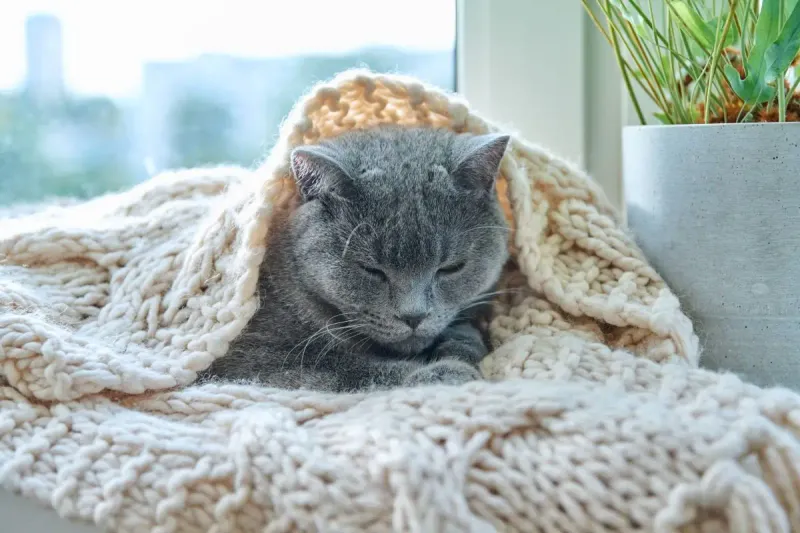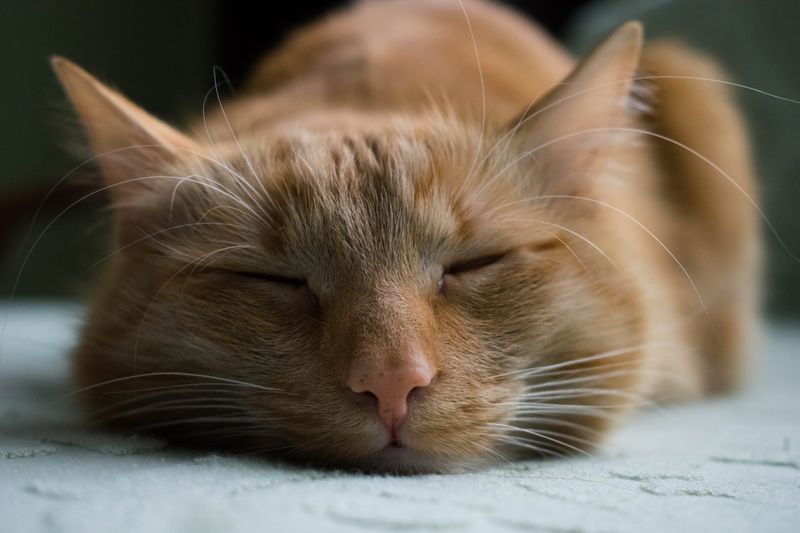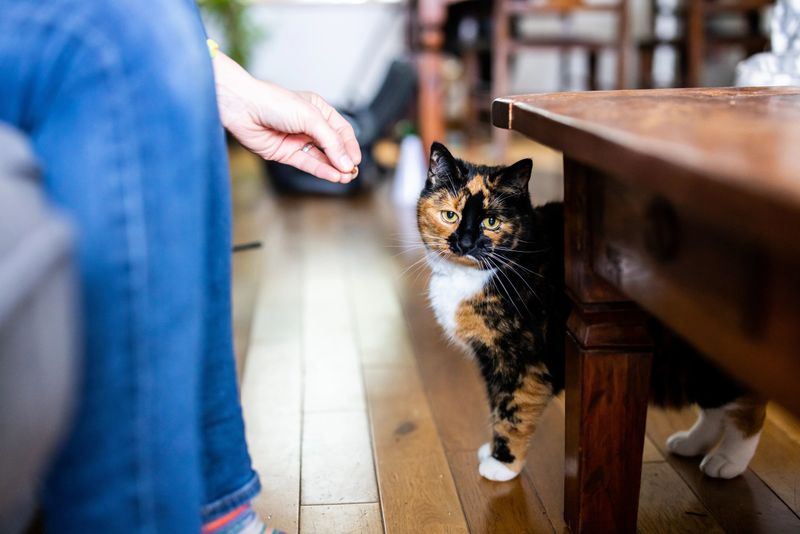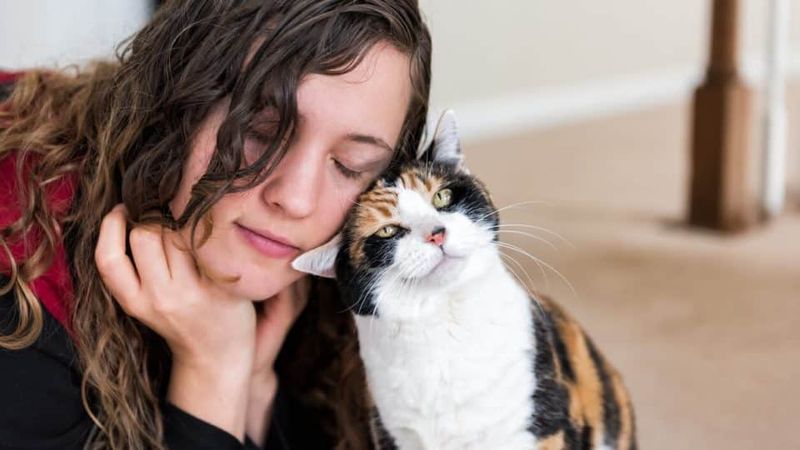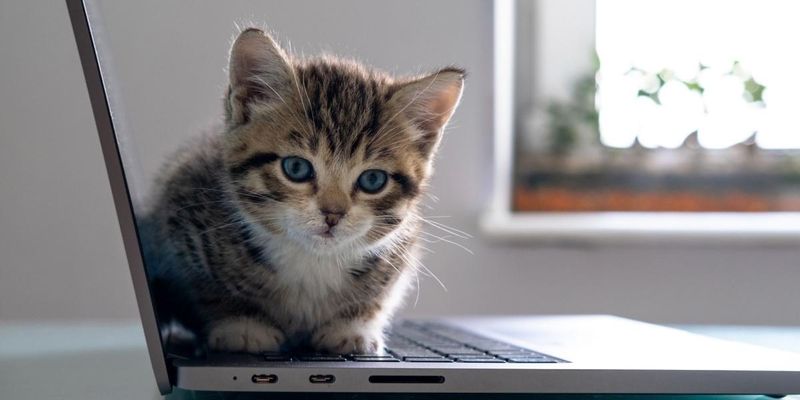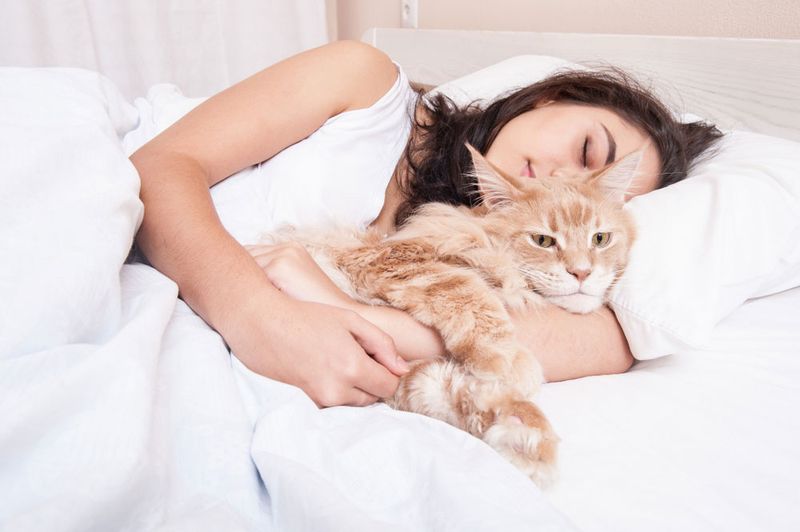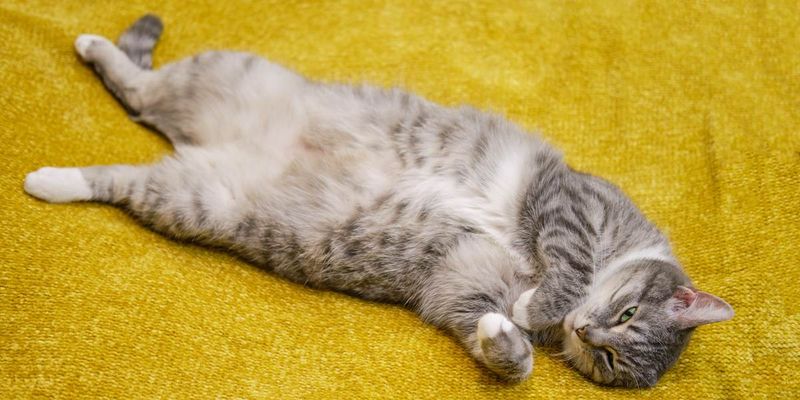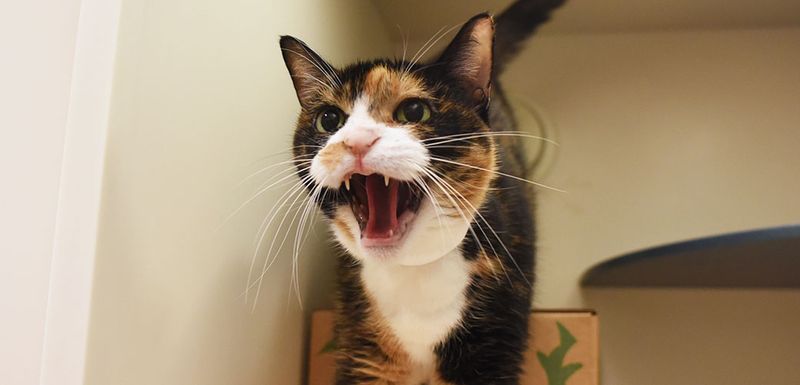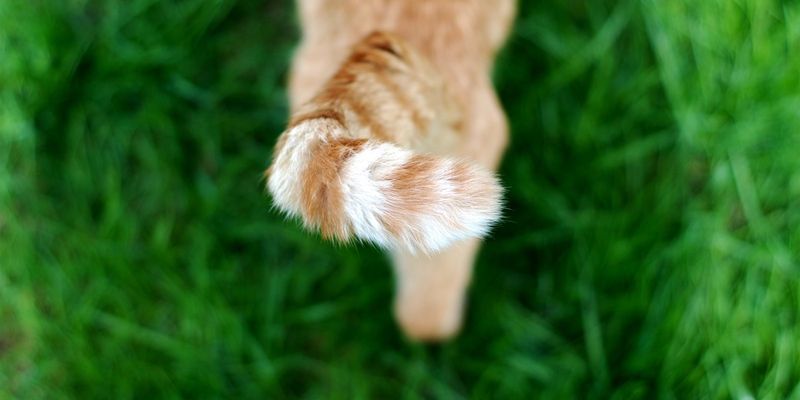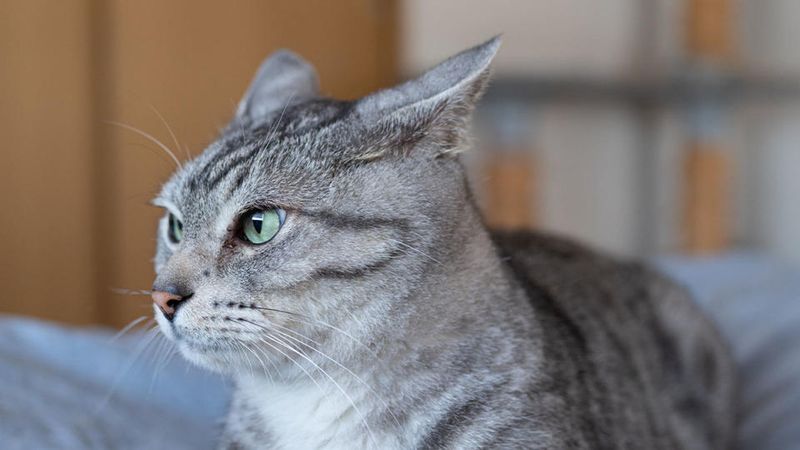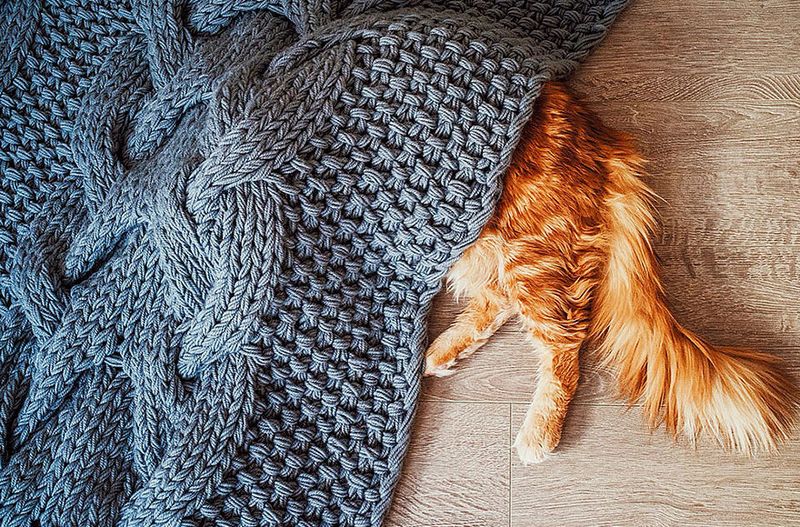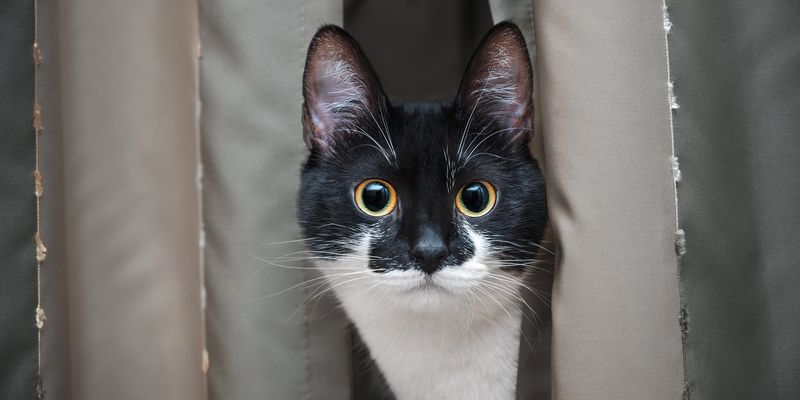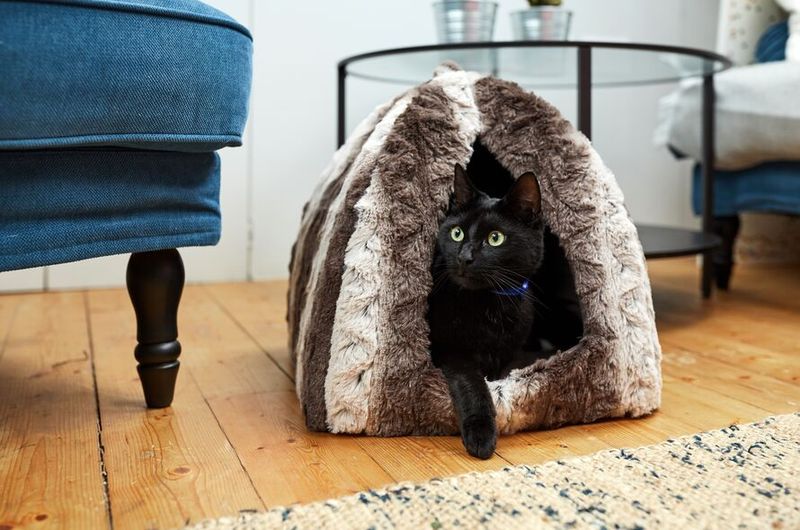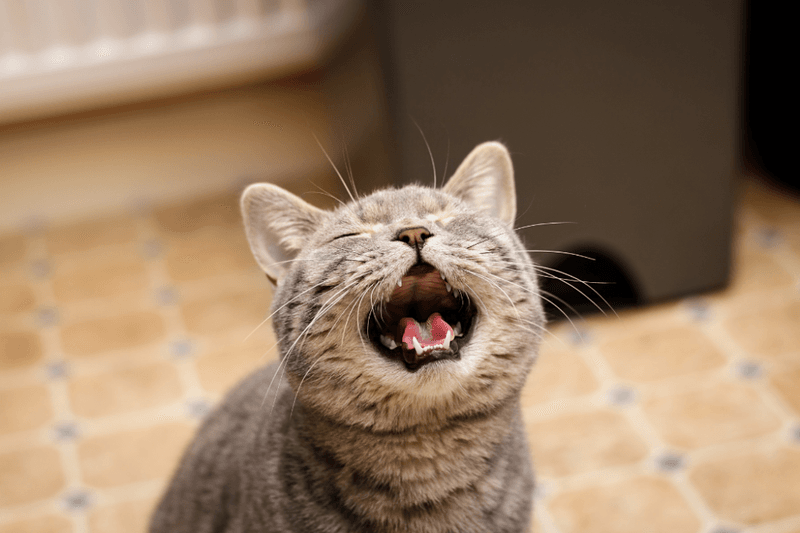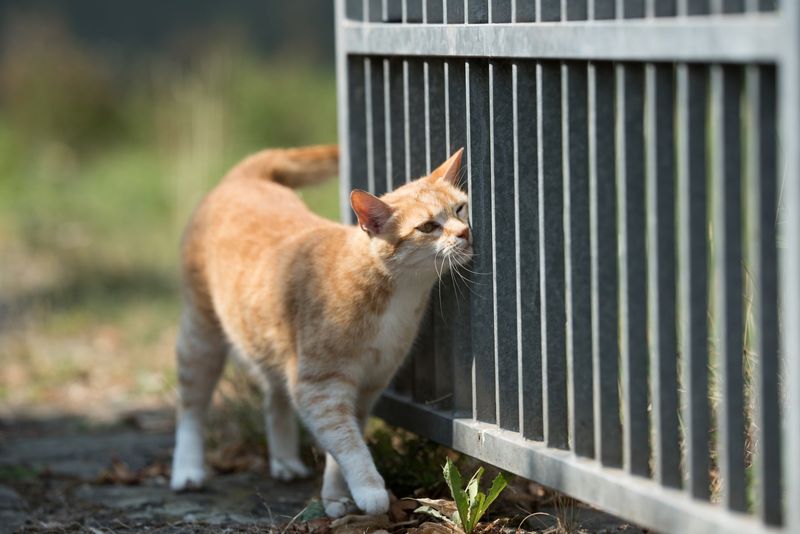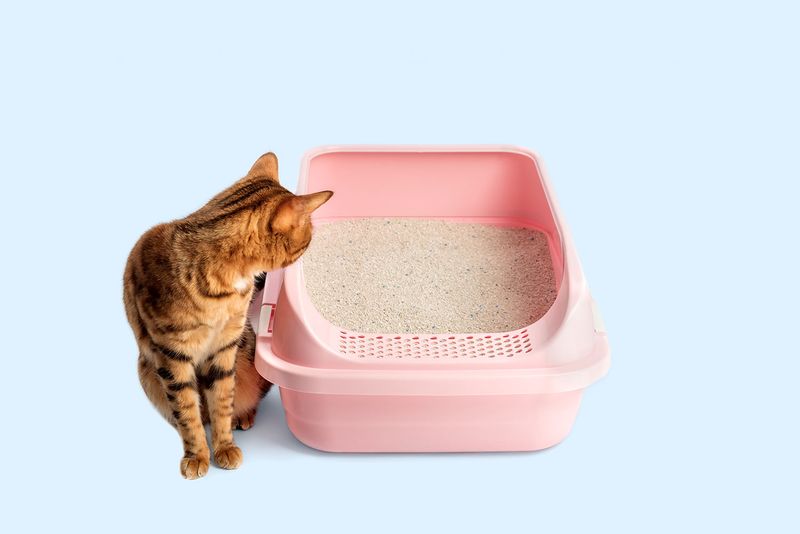📖 Table of Content:
- 1. Bringing You “Gifts”
- 2. Kneading Your Body
- 3. Slow Blinking at You
- 4. Knocking Things Over
- 5. Ignoring You When Called
- 6. Headbutting (Bunting)
- 7. Sitting on Your Laptop or Book
- 8. Sleeping on Your Chest
- 9. Rolling Over and Exposing Their Belly
- 1. Hissing or Growling
- 2. Swishing Tail Rapidly
- 3. Flattened Ears
- 4. Puffed-Up Tail
- 5. Staring at You
- 6. Avoiding You
- 7. Excessive Meowing
- 8. Spraying Urine
- 9. Defecating Outside the Litter Box
Cats are famously mysterious creatures, often charming us with their elegance while confusing us with behaviors that seem, at times, downright impolite. What we perceive as aloofness or mischief may in fact be deeply rooted in feline biology or social signaling. Understanding the true intent behind a cat’s actions can dramatically change the way we relate to them and can improve both human and feline happiness in the home.
While some behaviors might look like snubs—ignoring your call, knocking over your glass, or presenting a dead bird—they’re usually part of a broader language cats use to communicate affection, curiosity, or a need for stimulation. In contrast, some signs of rudeness are genuine cries for help or indications of stress. Knowing the difference can help cat owners respond appropriately, rather than misinterpreting natural actions as offensive or vindictive.
This article explores a blend of the misunderstood and the legitimately impolite sides of cat behavior. For every action that only seems rude but actually isn’t, there’s another that could signal something more serious. By distinguishing between the two, cat owners can become more compassionate caretakers and build stronger relationships with their furry companions.
1. Bringing You “Gifts”
Your cat drops a dead mouse at your feet and looks up expectantly. Gross? Yes. Rude? Not at all! This hunting behavior shows your cat considers you family. In the wild, mother cats teach their kittens to hunt by bringing back prey. When your domesticated tiger brings you toys or unfortunate critters, they’re sharing their bounty and showing affection in the most primal way possible. Rather than scolding, acknowledge their effort with a quick “thank you” before properly disposing of any real prey. For indoor cats, providing interactive toys can satisfy hunting instincts without involving actual wildlife.
2. Kneading Your Body
Those rhythmic paw pushes against your lap might be uncomfortable (especially with claws involved!), but this behavior is actually a compliment. Kneading—sometimes called “making biscuits”—begins in kittenhood to stimulate milk flow from mama cat. When your adult cat kneads you, they’re expressing contentment and security. They’re essentially saying, “You make me feel as safe as my mother did.” Many cats purr while kneading, further confirming their blissful state. To make this sweet behavior more comfortable, keep a small blanket nearby to place between you and those sharp claws, or maintain a regular nail-trimming schedule.
3. Slow Blinking at You
Caught your cat staring at you, then slowly closing and opening their eyes? Far from being weird or creepy, this is actually the feline equivalent of blowing a kiss! Cat behaviorists call these “slow blinks” or “eye kisses” a sign of deep trust and affection. In cat language, closing eyes around someone means feeling safe enough to be vulnerable. When your cat offers this gesture, they’re expressing love in their own special way. Try returning the sentiment by slowly blinking back. Many cats will respond positively to this communication, creating a sweet moment of connection between species. It’s one of the simplest ways to speak cat language.
4. Knocking Things Over
Watching your cat deliberately push your favorite mug off the counter might seem like calculated rudeness, but this behavior has natural explanations. Cats are hardwired to investigate objects with their paws since they lack hands with opposable thumbs. This batting behavior helps them determine if something is prey. The movement that follows—watching items fall—triggers their hunting instinct and provides entertainment. For indoor cats especially, creating movement in an otherwise static environment offers mental stimulation. Rather than assuming your cat is being spiteful, provide appropriate toys that satisfy this instinct. Interactive puzzle feeders and batting toys can redirect this energy away from your breakables.
5. Ignoring You When Called
You call your cat’s name repeatedly while they continue grooming, seemingly pretending you don’t exist. Frustrating? Yes. Deliberately rude? Not really. Research confirms cats recognize their names but respond selectively based on their own priorities. Unlike dogs, who evolved alongside humans as cooperative hunters, cats developed as solitary predators with independence hardwired into their DNA. Your cat might be fully aware you’re calling but simply doesn’t feel motivated to respond at that moment. Try using treats, toys, or consistent positive reinforcement to encourage better recall. Remember that respecting their autonomous nature is part of loving a cat on their own terms.
6. Headbutting (Bunting)
When your cat bumps their head against your hand, face, or leg, they’re not being aggressive or strange—they’re actually complimenting you! This behavior, called bunting, involves special scent glands located on your cat’s head. By rubbing these glands against you, your cat is marking you as part of their territory in the most affectionate way possible. It’s their way of saying “you belong to me” and “I feel safe with you.” Many cats will purr during this interaction, further confirming their positive intentions. Next time your feline friend gives you a gentle headbutt, feel honored—you’ve received one of the highest forms of cat approval and affection!
7. Sitting on Your Laptop or Book
You’re working diligently when suddenly—plop!—your cat positions themselves directly on your keyboard. While this might seem like a deliberate attempt to sabotage your productivity, the motivation is much sweeter. Cats are drawn to three things you provide while working: warmth (electronics generate heat), attention (you’re focused on something), and your scent (items you frequently touch carry your personal smell). By sitting on your work materials, they’re seeking both your attention and comfort simultaneously. Create a nearby alternative spot with a cozy cat bed or designated blanket. Some cat owners keep a decoy keyboard—an old, disconnected one that satisfies their pet’s desire to be close to both you and warm electronics.
8. Sleeping on Your Chest
Waking up with a furry companion parked squarely on your chest might seem like an invasion of personal space. However, this sleeping arrangement reveals your cat’s deep trust and affection toward you. Your chest offers several appealing features: steady rhythmic heartbeat (reminiscent of their mother’s), body warmth, and rising/falling breathing motions that cats find soothing. This position also allows them to monitor their environment while feeling secure—the perfect combination for a predator who’s also prey. If the weight becomes uncomfortable, gently guide them to sleep beside you instead. Many cats will happily accept this compromise while still maintaining the closeness they crave.
9. Rolling Over and Exposing Their Belly
When your cat flops over and displays their fluffy tummy, it looks like an invitation for belly rubs. Surprise attack when you reach out? That’s because this gesture is commonly misunderstood! A cat exposing their belly primarily signals trust, not a request for touches. The stomach area houses vital organs and represents vulnerability—showing it means “I feel safe enough around you to expose my most defenseless parts.” Many cats become defensive when this area is touched because it triggers protective instincts. Instead of going straight for the belly, try petting their head or scratching under the chin. If your cat genuinely enjoys belly rubs (some do!), they’ll relax rather than grab your hand with claws and teeth.
1. Hissing or Growling
Unlike many behaviors on our “not rude” list, hissing and growling are genuinely unfriendly communications from your cat. These vocalizations serve as clear warning signals that your cat feels threatened, frightened, or in pain. The sound of a hiss mimics a snake to startle potential threats, while growling indicates escalating aggression. Both are defensive mechanisms designed to prevent physical confrontation by scaring away the perceived threat—which might unfortunately be you or another household member. Never punish a cat for these signals. Instead, identify and remove the stressor if possible. Give your cat space and time to calm down, watching for body language cues like flattened ears or puffed tail that indicate continued distress.
2. Swishing Tail Rapidly
That fast-flicking tail isn’t your cat’s version of a happy wag—it’s the feline equivalent of a warning light. Unlike dogs, whose tail wagging usually signals joy, a cat’s rapidly swishing tail indicates rising irritation or frustration. This behavior often appears during petting sessions that have gone on too long or when something in the environment is agitating your cat. The faster and more forceful the swishing, the more intense your cat’s annoyance. Learning to recognize this signal can prevent scratches and bites. When you notice the tail beginning to swish, pause interaction and give your cat space. Respecting this boundary helps maintain trust and prevents your cat from escalating to more aggressive communications.
3. Flattened Ears
When your cat’s ears suddenly press flat against their head, they’re not being stubborn or sulky—they’re communicating serious distress. This unmistakable body language signals fear, anger, or defensive aggression. Cats flatten their ears to protect these vulnerable appendages before a potential fight. Combined with other signals like dilated pupils, arched back, or puffed fur, flattened ears indicate your cat is in full defensive mode and may lash out if approached. The best response is to create distance and identify what triggered this reaction. Common causes include loud noises, unfamiliar visitors, or territorial disputes with other pets. Never force interaction when a cat displays this body language—respect their communication and give them time to recover.
4. Puffed-Up Tail
A cat with a suddenly bottle-brush tail isn’t showing off fancy fur—they’re broadcasting intense emotion. This dramatic puffing occurs when tiny muscles at the base of each hair contract, making fur stand on end to create the illusion of larger size. Known as piloerection, this involuntary response happens during extreme fear or agitation. Your cat is essentially trying to look bigger and more intimidating to potential threats. The tail position provides additional clues—puffed and held high suggests defensive aggression, while puffed and tucked low indicates fear. Give your cat space when displaying this signal. Approach only when the fur returns to normal, and work to identify what triggered this strong reaction so you can minimize similar stressors in the future.
5. Staring at You
While slow blinks show affection, an unblinking, intense stare from your cat carries a very different message. This fixed gaze—especially with dilated pupils—signals aggression, fear, or territorial challenge. In feline social interactions, direct staring is confrontational. Cats typically avoid eye contact unless asserting dominance or preparing for defensive action. This behavior differs significantly from the relaxed, periodic glances of a content cat or the half-closed eyes of affection. If your cat locks eyes with you in this manner, slowly look away to defuse tension. Never stare back challengingly. Once your cat relaxes their gaze, try to identify what triggered this response—common causes include perceived territory violations or the presence of unfamiliar people or animals.
6. Avoiding You
When your normally social cat suddenly begins hiding under furniture or fleeing when you enter a room, they’re sending a clear message that something’s wrong. Unlike temporary independence, persistent avoidance indicates genuine distress or physical discomfort. Cats often hide when ill or injured due to their instinct to appear strong in the wild. Other causes include environmental changes, new household members (human or animal), or negative associations with your presence—perhaps after medication or unwanted handling. Approach this situation patiently, never forcing interaction. If avoidance persists beyond a day or two, consult your veterinarian to rule out medical issues. Once health concerns are addressed, rebuild trust gradually through positive experiences like treats, gentle play, and respecting boundaries.
7. Excessive Meowing
Occasional meows are normal communication, but sudden increases in vocalization often signal something genuinely problematic. Cats typically become more vocal when their needs aren’t being met or when experiencing discomfort. Senior cats may meow more due to cognitive changes or disorientation. Other causes include hunger, thirst, desire for attention, or medical issues like hyperthyroidism and pain. Some breeds are naturally talkative, but any dramatic change deserves investigation. Start by ensuring basic needs are met—fresh water, food, clean litter box, and environmental enrichment. If excessive meowing continues, especially in older cats or alongside other behavioral changes, consult your veterinarian. Recording the vocalizations can help professionals determine if they indicate specific distress or medical conditions.
8. Spraying Urine
Finding urine on vertical surfaces like walls or furniture isn’t just unpleasant—it’s your cat’s emergency broadcast system. Spraying differs from normal urination by location and purpose: while regular elimination happens in litter boxes, spraying targets vertical surfaces and serves as territorial marking. Unneutered males spray most frequently, but females and neutered males may spray when feeling insecure. Common triggers include new pets, moving homes, schedule changes, or outdoor cats visible through windows. The strong-smelling urine contains pheromones that communicate complex messages to other cats. Address this behavior promptly with veterinary guidance to rule out medical causes like urinary tract infections. Environmental modifications, pheromone diffusers, and behavior modification can help resolve this stress-related problem.
9. Defecating Outside the Litter Box
Finding unexpected “presents” around your home isn’t your cat being vindictive—it’s a serious communication you shouldn’t ignore. Cats are naturally fastidious about bathroom habits, so abandoning the litter box indicates something is genuinely wrong. Medical issues like constipation, diarrhea, or inflammatory bowel disease often trigger this behavior. Behavioral causes include litter box aversion (perhaps due to infrequent cleaning or uncomfortable litter), stress from household changes, or territorial conflicts with other pets. Start with a veterinary visit to rule out health problems. Then evaluate your litter box setup—provide one box per cat plus one extra, placed in quiet locations away from food areas. Clean boxes daily and experiment with different litter types to find your cat’s preference.
